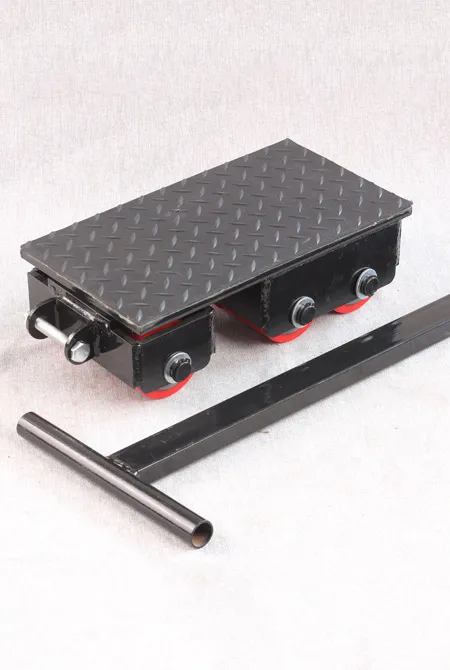Efficient Strategies for Transporting Heavy Machinery and Equipment Safely
The Importance of Heavy Equipment Moving Equipment
In the vast landscape of construction, demolition, and industrial projects, heavy equipment plays a crucial role in ensuring that tasks are completed efficiently and safely. However, the movement of this heavy equipment is equally significant, warranting specialized tools and methodologies to facilitate the process. This article explores the importance of heavy equipment moving equipment, its types, considerations, and best practices.
Understanding Heavy Equipment Moving Equipment
Heavy equipment moving equipment refers to the specialized tools and machinery utilized to transport large and heavy machinery from one location to another. This category includes a wide range of equipment such as trailers, dollies, winches, and cranes, each designed specifically to handle the unique weight, size, and shape of heavy machinery. Proper equipment is essential to maintain safety, prevent damage, and ensure operational efficiency during transportation.
Types of Heavy Equipment Moving Equipment
1. Trailers A common method for transporting heavy equipment is using a flatbed trailer or lowboy trailer. Trailers are specifically designed to distribute the load evenly and provide a stable platform during travel. Lowboy trailers, with their lower deck height, are particularly advantageous for transporting tall machinery that might exceed height restrictions on standard trailers.
2. Dollies and Skates For short distances, such as moving machinery within job sites or factories, dollies or skates can be employed. These devices allow for easier maneuvering of heavy equipment across flat surfaces. When using dollies, it's important to ensure that the weight limits are not exceeded and that the surface is capable of supporting the load.
3. Cranes In some situations, heavy equipment might need to be lifted and relocated. Cranes provide the necessary strength and reach to move equipment vertically or across distances that trailers cannot accommodate. Using a crane requires trained operators and a clear understanding of load limits, rigging techniques, and safety protocols.
4. Winches and Hoists For moving equipment that may be stuck or difficult to maneuver, winches and hoists offer solutions that utilize mechanical advantage. These devices can pull or lift heavy machinery with control, minimizing the risk of accidents or damage.
Considerations for Moving Heavy Equipment
When moving heavy equipment, several factors must be taken into account to ensure safety and efficiency
heavy equipment moving equipment

- Weight and Size Before transporting any equipment, it’s crucial to know its exact weight and dimensions. This information helps in selecting the appropriate moving equipment and ensures compliance with transport regulations.
- Route Planning Assessing the route for potential obstacles, weight restrictions, and height clearances is vital. Route planning should also include identifying any hazards that may pose risks, such as overhead power lines or narrow roadways.
- Permitting Heavy loads often require special permits, especially when traveling on public roads. It’s essential to check local regulations and acquire the necessary permits to avoid legal penalties and ensure a smooth transport process.
- Safety Protocols Implementing safety protocols is paramount when moving heavy equipment. This includes using personal protective equipment (PPE), conducting equipment inspections, and providing training for all personnel involved in the transport.
Best Practices for Transporting Heavy Equipment
1. Pre-Transport Inspections Conduct thorough inspections of both the equipment being moved and the transport vehicle. Check for any signs of wear or damage that could lead to failure during transport.
2. Secure Load Ensure that all machinery is securely fastened to the transport vehicle or platform. Utilize chains, straps, or other securing methods to prevent movement during transit.
3. Team Coordination Moving heavy equipment is a team effort. Clear communication and coordinated efforts among all team members are essential to prevent accidents and ensure the safe transportation of the machinery.
4. Post-Transport Checks Once the equipment has been delivered, perform a post-transport inspection to ensure that no damage occurred during the move and that the machinery is ready for use.
Conclusion
The transportation of heavy equipment is a critical aspect of any construction or industrial project. Utilizing the right moving equipment, adhering to safety practices, and planning effectively can significantly enhance the efficiency and safety of the entire process. As the demand for heavy machinery continues to grow, mastering the art of moving it seamlessly will remain an essential skill in the industry.
-
Unlock Seamless Relocation with Our Heavy Equipment Moving ExpertiseNewsJun.06,2025
-
Unleash Unrivaled Flexibility with Our Adjustable Gantry CraneNewsJun.06,2025
-
Unleash Heavy-Duty Efficiency with Our Industrial Gantry Crane SolutionsNewsJun.06,2025
-
Revolutionize Steel Handling with Our Magnetic Lifter RangeNewsJun.06,2025
-
Master Equipment Mobility with Premium Machinery Mover SolutionsNewsJun.06,2025
-
Elevate Your Material Handling with Magnetic Lifter TechnologyNewsJun.06,2025
-
YS Permanent Lifting Magnets: The Smarter Way to Handle SteelNewsMay.22,2025
